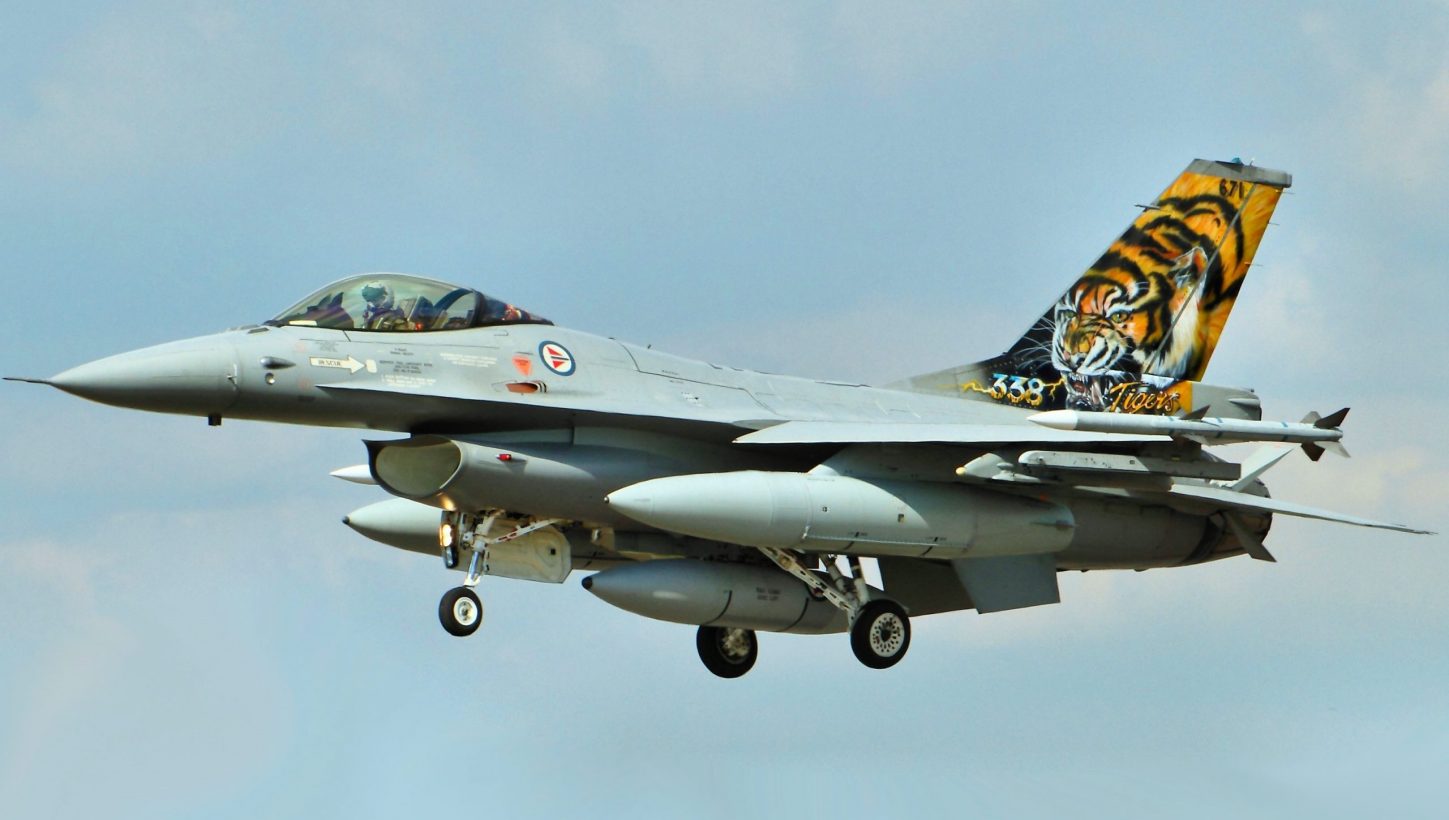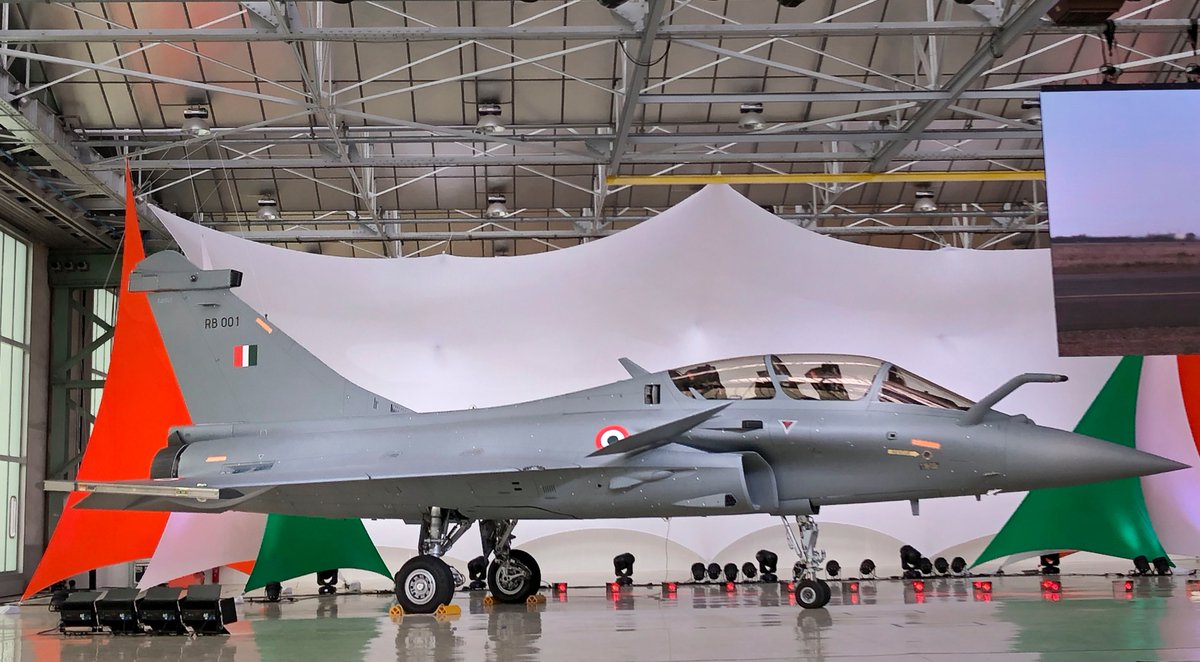Pakistan has finally put all speculations to rest by officially announcing its plan to acquire J-10C fighters for its Air Force. Islamabad’s plan to buy the Chinese workhorse is with an eye to match and challenge the Indian Air Force’s (IAF) fleet of Rafale fighter jets.
The Pakistan Air Force (PAF) has placed an order for FC-20 fighter aircraft from Chengdu Aerospace Corporation (CAC), one of China’s two major fighter aircraft designers and producers.
At the Dubai Air show 2019, CAC showcased a new export variant of their J-10 fighter. The aircraft, designated FC-20E, appears to be a near-identical duplicate of China’s newest J-10C, reported Frontier India.
Sheikh Rashid, Pakistan’s Interior Minister, told reporters in Rawalpindi on December 29 that a squadron of 25 Chinese-made J-10C jets would do a fly-past on March 23 on the occasion of Pakistan Day. The Chinese jets, according to the ministry, are “a reaction to India’s Rafale jets”.
Earlier, some reports had hinted that Pakistan was set to receive 36 J-10C semi-stealth 4.5 generation aircraft from China, but there is no official confirmation from either side.
The final number, however, has settled at 25. These aircraft are in addition to Pakistan’s existing fleet of the JF-17 fighter jets that were jointly produced by Beijing and Islamabad under an ambitious program.
The aircraft was previously spotted during joint air exercises between China and Pakistan. The J-10C variant was reportedly seen in some photographs at the Pakistan Air Force Chief’s office weeks before the public announcements about the purchase.
According to some reports, Pakistan has been dissatisfied with the existing JF-17s due to their engine-related inefficiencies that China has not yet fixed despite repeated requests from PAF.
With the delivery of the French-made Rafale planes to India nearing completion, Islamabad may have recognized the need to improve the PAF’s fighter aircraft fleet in order to create a balance of power.
As Pakistan’s fifth-generation fighter jet program, Project Azm, hangs in balance and its present fleet of JF-17 does not look competitive enough to challenge Indian Rafales, the J-10C becomes an obvious choice for Pakistan. But can this aircraft really challenge the Dassault Rafale?
Chengdu J-10 Vs Dassault Rafale
The J-10, dubbed “Firebird” by NATO, is a single-engine, light multirole fighter that can fly in all weather conditions. It was designed for the People’s Liberation Army Air Force to carry out strike and air-to-air combat operations.
The J-10 has a large delta wing; it also has two canards right behind the cockpit for increased maneuverability. The armament is identical to that of the MiG-29 and F-16, according to National Interest, with three weapon pylons on each wing and three on the belly.

The J-10C variant, on which the FC-20E is based, is powered by the indigenously developed WS-10 Taihang engine.
In contrast, the Rafale is a twin-engine fighter that can operate from either an aircraft carrier or a land base. All combat aviation missions can be carried out by the fully adaptable Rafale, including air superiority and air defense, close air support, in-depth strikes, reconnaissance, anti-ship strikes, and nuclear deterrent.

Rafale’s AESA radar, along with the Meteor missile, gives it a notable advantage in Beyond Visual Range (BVR) warfare. The electronic warfare package of Rafale is thought to be the best in its class.
The J-10C is powered by China’s homegrown engine, which replaced the Russian AL-31 engine used by previous variants. It employs the PL-15, a dual-stage BVRAAM with a range of 200 kilometers or more, for long-range interception. The PL-15 is also used by the JF-17 Thunder; hence, the J-10C doesn’t add anything new to the table, experts believe.
The Rafale, on the other hand, uses the Meteor, which is considered the best Air-to-Air-Missile in the world. It uses a next-generation technology called the ducted ramjet, which ensures a high range of 200 kilometers, but what’s more important is unlike the PL-15; it maintains the same kinetic energy throughout its flight range.
One major difference between the two aircraft is that, unlike the Rafale that has been used in combat missions in Afghanistan, Libya, Mali, Iraq and Syria, the J-10C has not faced a real combat situation. Thus, Rafale is not only a battle-tested but also battle-hardened fighter aircraft.
Even though the Pakistan Air Force possesses the jointly developed JF-17 fighters, they are not comparable to the Rafale of the Indian fleet. The aircraft that remotely resembles the capabilities of the Rafale is the F-16 present in the Pakistani fleet, but they are outdated and powered by a single engine.
Rafale A Superior Aircraft?
“Pakistan Air Force has likely ordered FC-20E fighter aircraft from the Chengdu Aerospace Corporation (CAC), which has similarities with the Chinese J-10C and is made by the same company. The fighter is advertised to possess better stealth qualities, AFAR (Active Phased Antenna Array) and a larger range of weapons. It is a good upgrade for Pakistan Air Force which flies dated JF-17,” Joseph P. Chacko, a military author, columnist, and analyst told The EurAsian Times.
“The difference between J-10C and FC-20E is unknown, but J-10C is expected to be superior to FC-20E. The Pakistani Minister referred to the fighter as JS-10. FC-20E could have been named Joint Strike Fighter -10, just like FC-1, which is called Joint Fighter -17 or JF-17.
“FC-20E or JS10 is not comparable to Rafales in both WVR and BVR. FC-20E gives more freedom against India as the US restricts F-16 use against India”, according to Chacko.
“J-10C, many say is a copy of the Lavi which Israel designed and dropped. It is a good aircraft which was using Su-30’s engine till the Chinese developed their own. Chinese and Russian engines are still inferior to the western ones. Both Rafale and J-10C use AESA radars with LPI. Rafale, I suspect has a better electronic warfare system, however, both are Delta Canard designs.”

When asked if the J-10C or an aircraft of the same specification could challenge the Rafale, military aviation watcher Amit Mukherjee said, “Rafale fires the Meteor and J-10C fires the PL-15 active radar homing missiles. The Chinese claim that the PL-15 has a longer range than the Meteor. Till the missile goes pitbull, it is guided by the data link from the parent aircraft. Rafale has a good data link. I have no idea about the performance of the Chinese data link.”
Two questions
FC-20E, the export variant of J-10C was unveiled only in 2019. So if 25 FC-20E participating in PAF flypast on 23 March, 2022 then
1)has China manufactured all 25 and gave PAF pilots training in just two years?
2) is it total 36 FC-20E with 70% affordability? pic.twitter.com/CENGyS9bcS— Sankalan Chattopadhyay (@VinodDX9) December 30, 2021
“Having single-engine J-10C’s in the PAF will not alter the military balance in South Asia. Reports of J-10’s being delivered to Pakistan have been around since the 2000s and unless hundreds are being supplied these have a limited impact on the PAF’s capabilities.”
The J-10C, however, is a very impressive model whose entry into the PAF will push back the creeping obsolescence of the branch’s inventory.
Yet from 2025 onward, the availability of 4.5 and 5th generation fighters (the Turkish TF-X comes to mind) as well as semi-stealthy or stealth UCAVs should be accessible to the PAF and this is when it can truly close the technology/firepower gap with the IAF.
The IAF’s timeline at the moment looks too daunting for any adversary. India’s Defence Research and Development Organisation (DRDO) is actively laying the groundwork for a ‘heavy’ stealth fighter, the AMCA, and another carrier-based fighter is in the works.
Meanwhile, the IAF seems to have a bright future with France’s aerospace sector not just because of the Rafale but the rich possibilities of tech transfers and joint ventures later this decade.
And probably, this is why the US and Russia are making persistent attempts to sell new fighters to the IAF. The advent of next-generation UAVs and UCAVs will transform the IAF’s doctrine and reach in a matter of years.
“However, it’s important to note how Beijing-Islamabad ties have blossomed to a remarkable degree with Imran Khan in office. This has a military dimension as well, and Pakistan is now receiving new frigates, submarines, tanks, and air defenses from China, and the cumulative effect, when measured together with Pakistan’s own advances in its military-industrial projects, is quite serious.

Personally, rather than comparing the quality of either air force, it matters to observe Pakistan’s less well-known but highly advanced projects like the Babur land-attack cruise missile that’s cost-effective and is available to the army and navy,” Miguel Miranda, a Philippines-based defense expert told The EurAsian Times.
In what could be judged from the opinions of the experts, the J-10C will be a force multiplier for the Pakistan Air Force. On paper, Rafale clearly holds an edge, but no one can speculate what will happen when they come face to face.
- Contact the author at sakshi.tiwari9555@gmail.com
- Follow EurAsian Times on Google News




